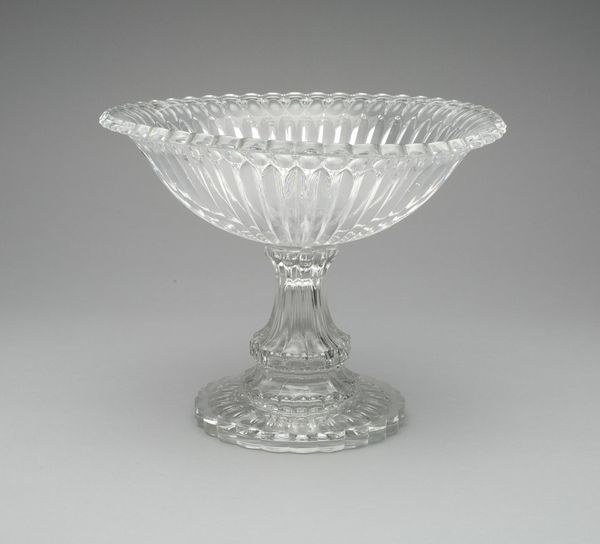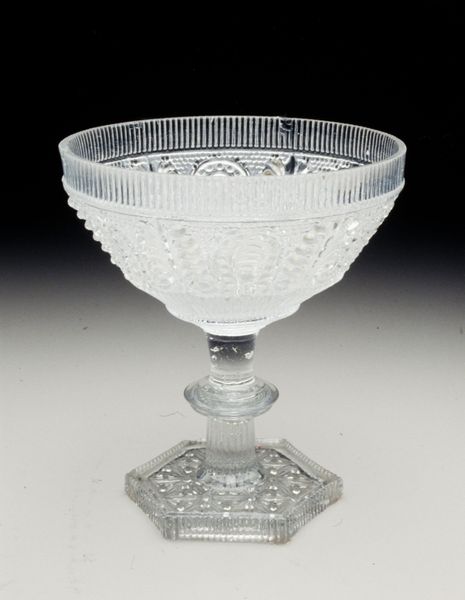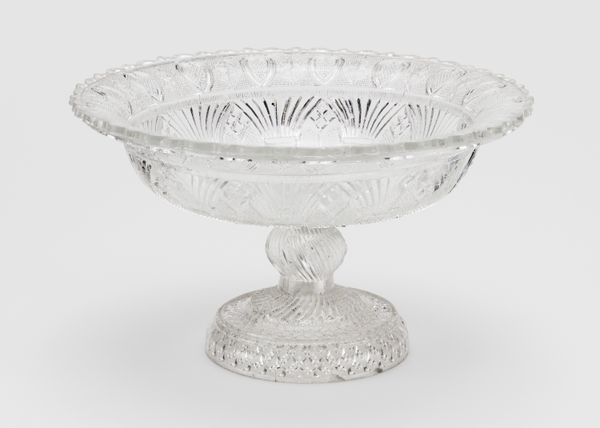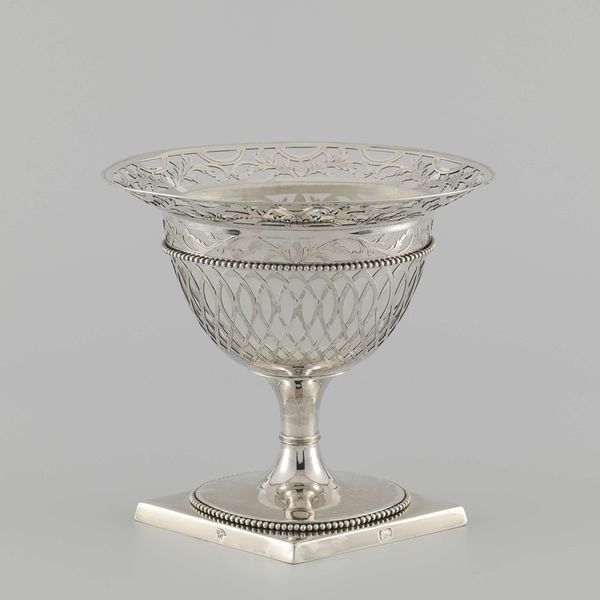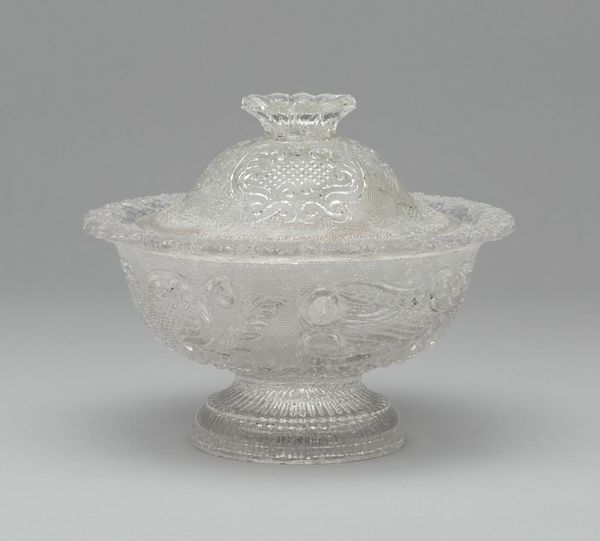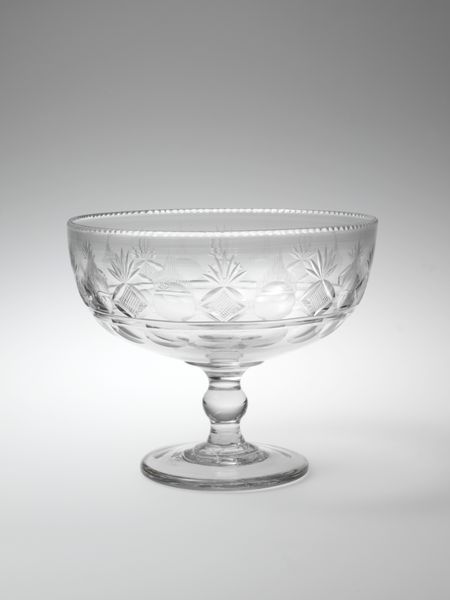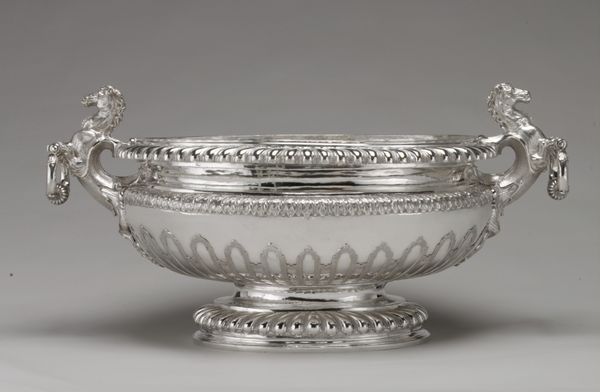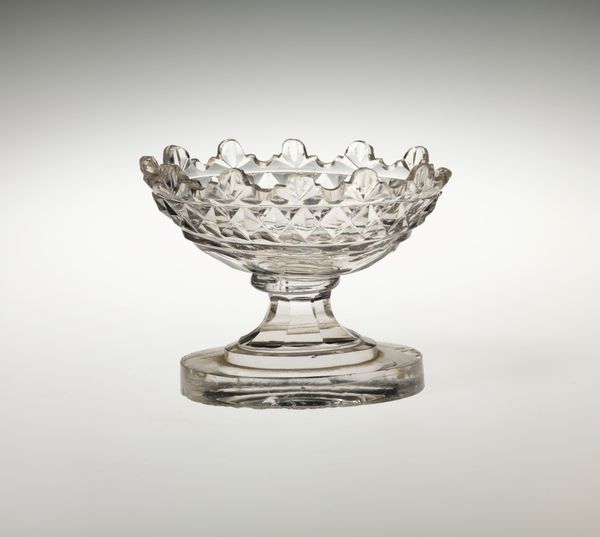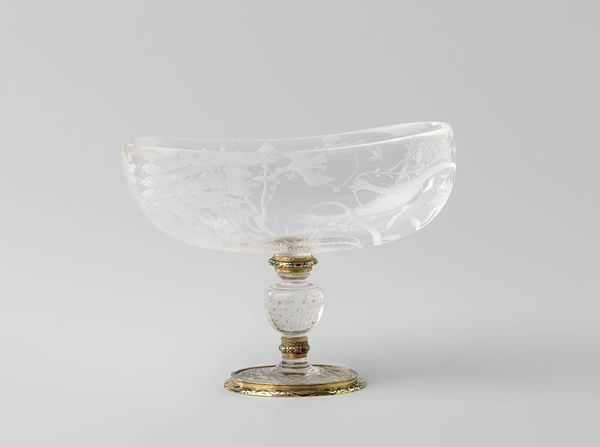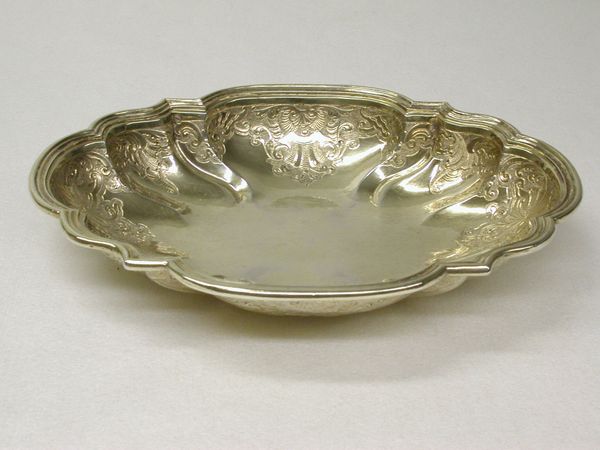
glass
#
glass
#
ceramic
#
decorative-art
Dimensions: 11.4 × 22.9 cm (4 1/2 × 9 in.)
Copyright: Public Domain
Curator: This pristine glass compote, crafted sometime between 1835 and 1850, hails from the Boston and Sandwich Glass Company. Editor: It has a ghostly clarity, doesn't it? The molded patterns catch the light in such a way as to create a rather elegant visual complexity with the minimum of ornamentation. Curator: Well, it was produced in an era defined by industrial innovations democratizing access to decorative art—allowing glass pieces like this to move from aristocratic homes to more middle-class settings. Imagine the Victorian tea tables where these would be centerpieces, displays of bourgeois aspirations and feminine accomplishments in hosting. Editor: Quite so. Observe, if you will, how the structure is both robust and refined. The bowl’s gently sloping sides invite the eye inward, guiding you to consider not just its potential contents, but its abstract form as a study of curves and planes. Curator: And the choice of clear glass reinforces a particular cultural ethos of the time, aligning transparency with perceived virtues of honesty and openness. But it's worth noting, such transparency wasn't accessible to all: it was facilitated by a system of labor and capital with inherent inequalities. Editor: Still, the radiating pattern from the pedestal mirrors the circular design along the bowl's rim. There's a harmonious resonance established through that repetition, inviting the touch—I wonder if you're struck by that too? The molded details demand a tactile exploration. Curator: The way the light refracts—mimicking gemstones—was absolutely designed to suggest luxury. But look closer— mass-produced glass couldn't possibly replicate handcrafted jewels. Rather, it allowed people from less privileged socioeconomic backgrounds the opportunity to emulate aristocratic fashions. This kind of cultural trickle-down has had enormous repercussions for the creation of identity since this piece was crafted. Editor: True, but, irrespective of class and history, the artisan molded a humble medium with sophistication and charm—resulting in this simple beauty we see. Curator: Right. Considering its legacy, I think this work gives material shape to ambition—that says so much about America at the time, and it continues to say something to us today. Editor: A very illuminating intersection of form, function, and society. Thanks for that deeper exploration, my friend.
Comments
No comments
Be the first to comment and join the conversation on the ultimate creative platform.
